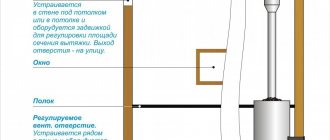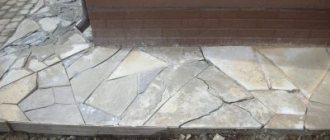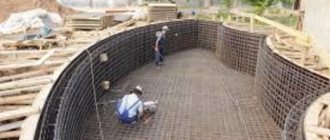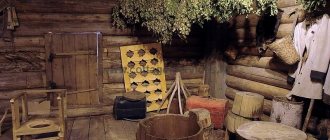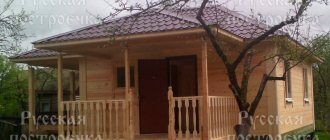There are a large number of materials on sale for thermal insulation work, among which penoplex occupies a special place due to its advantages. The material provides good surface insulation and is easy to work with. But it is important to choose high-quality glue for penoplex so that the installation result lasts for many years. It is the adhesive solutions for this material and their features that will be discussed in the article.
Features of penoplex
Penoplex (or penoplex) is a thermal insulation product of the company of the same name, necessary for insulating residential and non-residential premises. It differs from its less expensive analogue - foamed polystyrene - by its increased density, which contributes to resistance to mechanical stress.
There is also a reduced level of vapor permeability and an improved thermal conductivity. Therefore, 20 mm of efficiency of penoplex is equal to 40 mm of densely folded mineral wool and almost 40 cm of brickwork. A separate feature is the reduced water absorption rate, which is why the material lasts longer than conventional foam plastic, but is inferior to technoplex. As a result, the price-quality ratio makes Penoplex the most affordable and reliable representative.
Properties of foam plastic
Foamed polystyrene is a lightweight white polymer consisting of tightly compressed balls containing air. Polystyrene foam is very popular due to the following advantages:
- affordable price;
- ease of processing;
- non-toxic;
- inability to burn independently;
- waterproof;
- high thermal insulation potential;
- frost resistance;
- good sound insulation;
- resistance to fungus and other microbiological factors.
Types of adhesives
The key indicator for the adhesive composition is adhesion (reliability of adhesion of dissimilar planes), which helps maintain tightness and, as a consequence, the level of thermal insulation. However, construction work with polystyrene differs not only in climatic conditions, but also in the place of insulation - walls, floor or ceiling - where an increased force of attraction will act on the material, requiring the most durable connection of materials. Therefore, the following types are found on the market:
Polyurethane
To use such a composition, special equipment is required, since the entire substance is contained in a cylinder in a compressed state. This approach allows you to take your time and not use the entire resource at once, although long-term storage of the started container leads to drying out and unsuitability of the adhesive composition.
When working, it is recommended to apply the raw material in zigzags, without stopping in one place. To set with the base, it is enough to wait one and a half minutes, but the elasticity of the polyurethane substance itself will remain for another fifteen minutes. Therefore, this glue is convenient when the construction project involves the question of how to glue penoplex before the onset of bad weather or the end of the working day.
Polymer adhesives
The weakest representative of the genre, if we talk about adhesion, nevertheless, it is in demand on the market due to its low cost and availability. It is not recommended to use it when working with the ceiling, since the substance may not withstand the weight of the insulation.
Also, you should not give it to beginners - the substance begins to dry out within a few seconds after application, which will require a quick reaction to maintain adhesion properties. The most reliable option is to use it together with another solution if mineral, polyurethane or other suitable substance is not enough.
Mineral
If mineral adhesives harden quickly, then with mineral substances this process proceeds even faster. Largely due to the composition: cement, gypsum and alabaster. Therefore, in the labor process, it is recommended to knead small portions in order to immediately consume them and not transfer the resource into a meaningless hardened mass. This approach is compensated by the increased strength that appears after the substance has completely dried.
Mineral representatives are divided into two categories: with a predominance of gypsum and with a high content of cement. The first group is relevant for interior finishing work, the second is usually used when insulating the outside of a house.
Waterproofing compounds
If wood or metal is used as the base to which the foam boards will be attached, then gluing is most reliably carried out using a waterproofing compound. However, you should not use it for interior repairs, since the solution contains oil, which is harmful to the human body over a long period of time.
Requirements for the adhesive composition
The composition of the adhesive should ensure good adhesion to the base material.
Penoplex adhesive for interior work can be used in different ways: waterproofing, polyurethane, mineral. Due to its closed pores, the material does not absorb the adhesive solution, so its characteristics have little effect on the properties of penoplex. Since the sheets weigh very little, the adhesive strength of the glue may be small.
The limitation is substances that destroy the material. Therefore, the adhesive should not contain the following compounds:
- toluene, xylene and benzene serve as solvents;
- acetone and other ketones – oxidize;
- formalin and formaldehyde are substances dangerous to human health;
- gasoline, kerosene, other oils, including mineral oils;
- polyester resins.
Another requirement is good adhesion to the surface material. While concrete has good adhesive strength due to its structure, smooth metal does not have it - here a special compound is needed for gluing.
What glue should not be used?
Due to the structural features of penoplex boards, not every fastening solution is suitable for use. This applies to both the material itself and the conditions associated with it.
First of all, you cannot use an adhesive solution that is entirely based on cement. Polystyrene objects have a high density and, as a result, microscopic pores and crevices, which play an important role in bonding materials together. The cement substance used to hold the stones and bricks together is too coarse and does not provide any adhesion. A similar ban is imposed on liquid plastic, the strength of which will not be enough to hold the skin.
Adhesives that destroy the structure of the foam variety: polyester and coke tar cannot be used. Sometimes on display cases there are options created on the basis of gasoline, methylbenzene, acetone, methanal or xylene. Such ingredients are recognized as unsafe for both the construction industry and people. But some manufacturers use them because they are cheap and accessible, so it is important to carefully read the composition of the package before purchasing.
A resource with a high oil content - waterproofing - is harmful to human health, which means it is allowed to be used only on the outside. Bitumen mastic emits toxic fumes in hot weather, which is why in summer it is necessary to wear a mask or respirator for the benefit of your own health.
How to choose for different surfaces
Since penoplex is always produced according to the same formula with identical content, the question arises regarding the plane to which the fastening will be carried out.
Since the work is divided into external and internal, the available options consist of: stone, brick, concrete, wood, metal, plastic and corrugated sheeting. Experienced builders share their experience in choosing glue, and the most useful recommendations look like this:
- Before gluing polystyrene to concrete, plaster or brickwork, you will need to purchase mineral, granular mixtures - they provide reliable adhesion, penetrating into all pores and crevices in a liquid state. Before purchasing, it is important to ensure the sealed integrity of the bag, because premature drying or wetting threatens to deteriorate the properties of the solution;
- Before gluing penoplex to metal, you need to decide between liquid nails, silicone sealant and even polyurethane foam. If there is an acute shortage of adhesive composition, you can use PVA glue, but its application must be diluted with another substance, otherwise there simply will not be enough strength for adhesion;
- The combination of insulation with corrugated sheets, plastic or chipboard using liquid nails will become reliable if we are not talking about the ceiling;
- And if we are talking about the ceiling, then you should turn to the polymer version for help;
- If there are no better options than gluing penoplex to wood or reinforced concrete, then polyurethane options are allowed;
- Foam adhesive will serve as a universal solution if a more preferable option is not at hand;
- The seams at the junction of penoplex boards must be lubricated to maintain tightness - you can use a bituminous substance, waterproofing material or a polymer resource.
Fastening drywall
GVL (gypsum fiber sheet) is a well-known drywall that is widely used in repairs.
GVL is attached to penoplex in two ways. It can be glued and also strengthened by installing a frame made of metal or wood. The wooden frame should be a few centimeters behind the wall. The space between the slats is filled with foam sheets. The gaps between the plates of thermal insulation material are closed with installation foam. Then drywall is attached to the wooden blocks.
Insulation using penoplex and plasterboard is a fairly common method used on loggias, balconies, basements and garages. Penoplex sheets covered with plasterboard should not be used in high rooms (wall heights greater than 2.5 m). The frame should be stitched tightly.
Fastening drywall to penoplex using dowels is the best solution. For low wall heights, fastening with glue is a completely acceptable option.
How to glue penoplex together
The question of how to glue penoplex together is implied in two planes: deep and horizontal. In the latter case, this means coating the cracks at the junction of the ends and ribs in order to form a sealed space and prevent moisture from entering - here, as described above, waterproofing, bitumen or polymer are useful.
But sometimes single-layer insulation may not be enough due to persistently cold climatic circumstances, or due to the thinness of the foam product itself. Then gluing is required according to the principle of automobile glass - an adhesive solution is poured between two sheets, and the resulting “sandwich” is used for covering. In this situation, there is an affirmative answer to the question of whether it is possible to glue penoplex to liquid nails.
Sometimes the desire to install another layer arises after the first fragment has been “moored” to the surface to be improved. Some people try to secure the second slab using screws or nails, but this solution leads to a violation of the tightness of the material. You can coat the hardware with waterproofing material, but it is better to immediately use liquid nails, as stated in the paragraph earlier, and not pierce the polystyrene board.
Is it possible to glue on polyurethane foam?
In general, it’s possible - the connection will be strong. But achieving such a result is hampered by several aspects, the first of which is price. The consumption of this substance is small, but the structural features of the composition lead to rapid hardening not only on the surface, but also inside the spray bottle. Therefore, knowledgeable builders prefer to purchase a cylinder and use it entirely right away, so that there is no “money down the drain” situation.
Another point concerns the drying of the foam, and more specifically, its tendency to constantly expand. As a result, there is no need to spray a lot onto the surface, but you will have to put in a few more minutes of effort and press the penoplex against the wall or ceiling so that the swelling substance does not “throw back” the insulation.
If it comes to the floor, then you first need to form a self-leveling concrete screed - this will increase the strength of the final result. In other cases, no preparatory paperwork is required.
Questions and answers
Question No. 1
What should I use to glue penoplex to a wall or ceiling?
Depends on the wall:
- To install penoplex on wooden walls, it is better to use acrylic glue;
- Mineral dry mixtures are more suitable for a brick wall or concrete;
- Penoplex is glued to metal using polymer mixtures in cans;
Bituminous mastic works well on bitumen waterproofing, for example, a foundation.
Question No. 2
Is it possible to glue with polyurethane foam?
Theoretically yes. But:
- firstly, it will be quite expensive;
- secondly, the polyurethane foam expands greatly when it hardens, so you will have to press the slabs against the wall every 5 minutes and so on until the expansion process ends.
By the way, umbrella dowels do not save you; they can simply be torn off.
Question No. 3
Is it possible to glue with Liquid Nails?
It’s possible, but liquid nails are even more expensive than polyurethane foam, plus you need to spread the glue, wait until it dries slightly (5-7 minutes) and only then glue it, which takes all the time.
Question No. 4
Is it possible to glue in the cold?
Some compounds with frost resistance F100 allow such work, but in general it is undesirable. The instructions will help you.
Question No. 5
How to glue foam boards together?
In the same way as you glue them to the wall, only here you can do without primer and it is advisable to apply the glue in a continuous layer.
Question No. 6
Is it possible to do without fixing with dowels when installing slabs on a wall or ceiling?
Absolutely not, such savings can backfire, especially when it comes to exterior work or insulation under plaster.
Question No. 7
What is Penoplex “afraid of”?
- Petrol;
- Kerosene;
- Solara;
- Solvents;
- Toluene;
- Benzene;
- Coal tar;
- Polyester resin;
- Formalin;
- Formaldehyde;
- Ultra-violet rays.
There are a number of questions that concern users regarding the use of penoplex.
How to glue penoplex to penoplex?
There is no difference between how to glue two sections of penoplex and this material to other surfaces. But experienced builders claim that when fastening the slabs together, it is better to use a continuous method of applying glue, and you can do without a primer. In this case, dowel-nails are not required, and any glue listed above will do.
Is it possible to glue the material onto polyurethane foam?
You can glue penoplex to the foam, the adhesion will be strong. On the floor, this type of work is carried out on a self-leveling concrete screed. But gluing onto polyurethane foam is very expensive. It also tends to expand, so you will have to constantly press it until the process is completed.
Is it possible to glue penoplex to liquid nails?
You can use liquid nails, but it’s not very convenient. It should take up to 7 minutes before applying the slab in place, otherwise the glue will not set. In addition, the price of work will increase significantly.
Does air temperature matter?
This depends on the type of adhesive composition. Some lose their properties at low temperatures. Others allow work in the cold. All data must be clarified in the instructions.
At what temperature can you glue?
By default, interior work is carried out at room temperature, and exterior work is prohibited if the air temperature is less than 10 ° C. Bitumen mastic is suitable for work even in severe frost, and in the heat, and even under the scorching sun, each material will harden longer than usual if will not deteriorate while waiting.
In any case, before construction, you need to familiarize yourself with the operating requirements and storage conditions - indoor solutions are not always universal and reliable.
Stamps
Purchasing glue for polystyrene is not a common procedure for those who only carry out repairs in their home or apartment. Therefore, it is better not to waste time (and money) trying to choose the most effective option, but to immediately choose from the highest-rated ones.
Tytan
A universal adhesive, also suitable for improving the exterior, because it is resistant to precipitation and does not allow heat to pass through. It is most rational to purchase the Professional Styro 753 subtype, which provides maximum adhesion of the insulation to the surface.
Ceresit
This product comes in two versions: foam and bulk. The first can be used to insulate the ceiling. The foam hardens quickly and can withstand a wide temperature range - from -10°C to +40°C. And the prepared solution well answers the question “how to glue penoplex to concrete?”, however, two hours should pass between mixing and use.
Moment
The most practical option among those presented, which is even used to create a reinforced mesh, but, as a result, the most expensive. It does not require shrinkage and is also characterized by good elasticity.
Master termol
Due to its high frost resistance, it is purchased for winter work. Recommended for working with limestone materials - reinforced concrete or plaster.
Profline 3k 45
This copy is suitable for those for whom the construction process is a meditative activity that requires prudence and not haste; due to the elasticity and low rate of hardening and setting, the worker will always have the opportunity to check the quality and effectiveness of his work.
Manufacturers and reviews
Let's look at the most popular manufacturers of foam adhesives.
Polish manufacturer Selena produces high-quality products at a good price. It offers Tytan adhesive sealants and universal compounds.
To glue penoplex to various materials, it is better to use the Professional Styro 753 series, which allows you to work outside, as it is highly resistant to precipitation, temperature changes, and moisture. When working with this glue, the tightest possible fit of materials is ensured.
Cerisit
Ceresit is a popular and sought-after brand that has released compositions that allow you to stick penoplex on walls, ceilings or other surfaces.
The assortment includes a whole line for working with this material:
- Ceresit ST 84 is a construction foam for penoplex, which is used in facade cladding. She is not afraid of both sub-zero temperatures from -10° and heat up to 40°. Dries very quickly, especially in summer, in 2-4 hours. It is convenient to use a mounting gun.
- Cerisit ST 83 is sold as a dry mixture. The material dries completely in only 3 days, if conditions for air temperatures in the positive range are observed. It is convenient to work with the composition with a notched spatula. On average, 6 kg/m² is consumed. The disadvantage of this substance is that it does not respond well to cold weather; it is not recommended to work with it in such conditions.
- Cerisit CT 85 is a special adhesive that is used for joining and reinforcing slabs.
This composition can also be used in warm conditions from 5 to 30 °C. The mixture is sold dry. Therefore, first you need to dilute it with water, let it sit for 2 hours, and only then apply it to the materials. For conventional gluing, the consumption is 6 kg/m², and for reinforcement – 5 kg/m².
"Moment"
The “Moment” adhesive composition will allow you to attach penoplex to anything. A universal composition will glue the material better; it can also be used as an alternative to substances for creating a reinforcing mesh. It has a good level of adhesion, high elasticity, frost resistance and moisture resistance. It does not need shrinkage and can withstand temperature changes.
Master Termol
The Master Termol brand produces an adhesive mixture to provide foam insulation systems.
It combines cement-sand components and has many advantages, including:
- Good adhesion to walls made of cement, concrete and lime materials.
- High level of adhesion to polystyrene foam.
- High plasticity of the glue.
- Frost resistance.
- Ecological purity of the composition.
Master Termol can glue the necessary materials to each other with high quality and at the same level as products from a more expensive category.
ProfLine ZK-4
The ProfLine ZK-4 variety contains special substances that increase the level of adhesion between the base and penoplex. Allows you to work even with plastered bases, as well as cement and concrete. After complete hardening, the glue is not affected by moisture, frost, mechanical and other external factors. The adhesive product is produced from high-quality raw materials.
Penoplex Fastfix
A professional construction composition simplifies the process of attaching penoplex, makes the adhesion high-quality, reliable and durable. Penoplex sheets can be easily attached to concrete, aerated concrete, ceramics or brick. But it is not suitable for foil bases. Also, do not glue penoplex to silicone, Teflon, polyethylene, bitumen.
How to glue penoplex
Before the gluing procedure, the surface is cleaned of dirt, dust and lumps of solution that prevent a tight contact. The wall, floor or ceiling must be washed and dried. Depending on the glue chosen, additional measures will be required, described in the instructions or on the packaging.
Installation technology
The adhesive solution is applied to the insulation using one of three methods: either dots at a distance of 20-30 centimeters from each other, or stripes in the corners and in the center, or continuous filling with wavy lines. The choice depends on the characteristics of the glue - for example, it is better to apply foam, which is prone to expansion, in a dotted manner, and liquid nails - in a continuous manner.
Puttying penoplex
After the adhesive mixture has hardened, the insulation is puttied - this provides increased protection and helps reduce thermal conductivity. The solution is applied in three layers, where the first has a width of 10 millimeters, the second is reduced to 5, and the last can be sprayed onto the resulting monolith.
External protection
To preserve heat, protect the penoplex and just for beauty, the last, final layer of glue is applied. Here, the most relevant property is adhesion, which determines adhesion, and knowledgeable workers take the products of Polymin, Master and Ceresit.
Gluing stone and tiles to penoplex
Finishing is an optional, but desirable measure - the point is not beauty, but additional protection from mechanical and thermal sources of influence. Ceramic products are usually used - ceramic tiles or porcelain stoneware - but artificial stone will also work.
For adhesion, a special tile adhesive is purchased, which is no longer related to penoplex, since the surface is not insulation, but plaster coated with a layer of glue. The floor is covered immediately, and before gluing the penoplex to the walls, it is necessary to form a preliminary reinforcing mesh.
Foundation insulation
Insulation of the foundation. It can be performed both in a building under construction and in an already constructed one.
Despite the fact that the foundation is the underground part of the building and is closed from cold air, the soil can freeze quite deeply. In addition, the cold rises to the wall (cold bridges).
This type of work consists of three stages:
- Insulation of the foundation (vertical and horizontal).
- Base insulation (vertical).
- Insulation of the blind area (horizontal).
This is important: for maximum efficiency of the process of insulating the foundation of a building, none of the above stages should be neglected. The process of insulating the foundation with penoplex slabs is as follows:
The process of insulating the foundation with penoplex slabs is as follows:
- Before installing Penoplex slabs, it is necessary to apply a waterproofing layer.
- Using an adhesive mixture, which is applied to the surface with a notched trowel, thermal insulation boards are mounted. The device is performed starting from the bottom row.
- If necessary, a second layer of heat insulation is installed using the same glue.
- Insulation is carried out up to and including the base.
- The soil is being backfilled.
- To avoid soil freezing, it is necessary to provide horizontal thermal insulation under the blind area along the entire perimeter of the building.
- A fiberglass mesh is laid on the base part and the finishing of the structure is carried out.
Scheme of foundation insulation with penoplex
Glue consumption
This parameter varies depending on the composition. Therefore, manufacturers immediately indicate the indicator on the packaging so that the buyer can calculate and determine the required quantity in advance.
But if we start from arithmetic averages, then a layer of mineral substance with an area of 1 m2 takes 4 kilograms, and if the substance is used from a cylinder, then one vessel is enough for 10 m2. Accordingly, dry mixtures are cheaper, but require more time and effort to prepare.
| Glue brand | The basis | Consumption per 1 m2 | Price |
| ATLAS STOPTER K-20 kley | Mineral | 4.5 kg | 1 bag of dry mixture – 310 rub. |
| Polyurethane adhesive "TITAN" | Concrete products | 0.75 l | tube – 405 rub. |
| "CERESIT" (ST83) | Any | 5 kg | 1 bag 25 kg – 375 rub. |
| "T-Avangard-K" | Needs waterproofing | 5 kg | Packaging 25 kg – 270 rub. |
| ALLFIX | Any | 0.5-0.8 kg | 1 kg – 230 rub. |
Tips for use
The activity of gluing penoplex to building surfaces does not require a professional approach. It’s possible to cope with the task without experience, but it wouldn’t hurt to ask a neighbor for help or get acquainted with the advice and recommendations of academically minded builders. You also need to follow simple rules that will not only make it easier to achieve your goal, but also save money from being wasted:
- The instructions and requirements placed on the packaging are required to be read - preferably before purchasing the resource;
- The glue is applied evenly, in a layer of no more than 3 millimeters. It is determined “by eye”, so a small error will not spoil the plan;
- Treating the surface with a primer prevents the formation of mold and the accumulation of destructive moisture;
- Beginners should not purchase quick-drying solutions, so that they have more time and opportunity to adjust Penoplex;
- It is more rational to buy the adhesive mixture with a reserve so that during the activity it does not accidentally run out, forcing you to go to the store and waste precious time.

